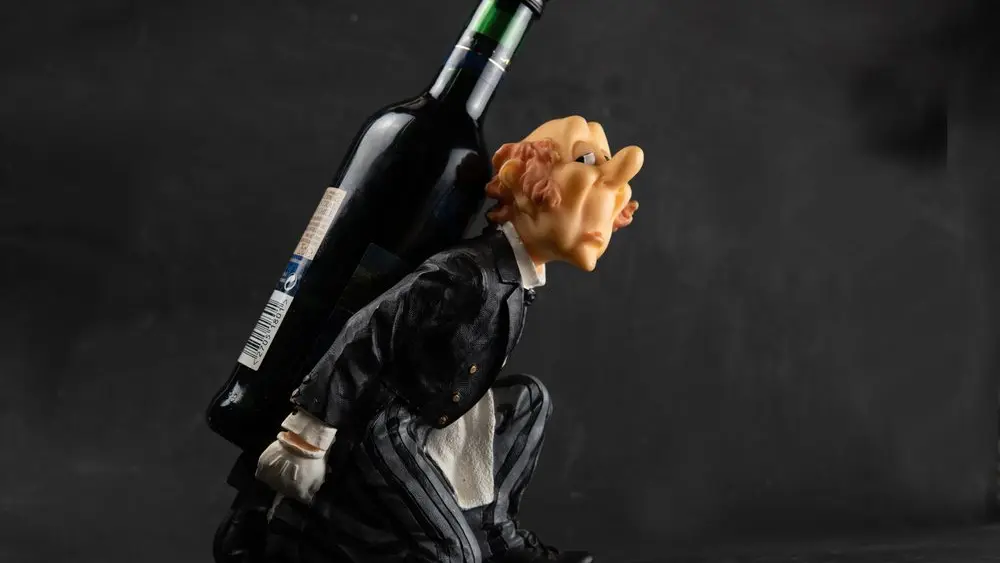 In November 2014, Chinese President Xi Jinping and President Barack Obama agreed to extend China’s tourist visas for 10 years and student visas for five years. Since then, visa issuance has jumped nearly 70 percent. A recent study showed that, on average, visitors from China spent $6,000 per person during trips to the United States, which was more than any of the other group surveyed. Visit California, the state’s tourism marketing board, recently made China its primary target for tourism due to increases in both existing and forecasted visitors and spending (it was previously fifth on the list).
In November 2014, Chinese President Xi Jinping and President Barack Obama agreed to extend China’s tourist visas for 10 years and student visas for five years. Since then, visa issuance has jumped nearly 70 percent. A recent study showed that, on average, visitors from China spent $6,000 per person during trips to the United States, which was more than any of the other group surveyed. Visit California, the state’s tourism marketing board, recently made China its primary target for tourism due to increases in both existing and forecasted visitors and spending (it was previously fifth on the list).
Wine is also becoming more widely consumed in China. As a result, Chinese tourism to California’s Wine Country is expected to increase.
“The Chinese traveler is—and will continue to be—incredibly valuable to California’s economy, including Wine Country,” says Caroline Beteta, president and CEO of Visit California. “Our organization is investing $9 million, marketing our state as a travel destination to China, and it’s paying off: This year, California will welcome 1.2 million Chinese tourists, a 13.5 percent increase over 2015,” she says. “These are high-spending travelers—by 2018, we project Chinese visitors to California will collectively spend more than $4 billion in the state.”
Beteta’s comments on high-spending travelers is echoed by a recent ChinaDaily USA report that Chinese tourists are the most desired international shoppers, spending an average $6,000 per person per trip to the United States, higher than any other visiting group.
“As China’s middle class continues to expand, we project double-digit growth in the next few years,” says Antonette Eckert, director of international tourism in Asia and the Pacific for San Francisco Travel, a tourism organization. “San Francisco International Airport is a key gateway between China and Wine Country.”
“We’re seeing an increase in free independent travelers coming from China, particularly from the Tier 1 cities of Beijing, Shanghai and Guangzhou,” says Eckert. “These travelers tend to want a more ‘experiential’ holiday and express interest in seeing and doing activities beyond the usual group tour. While traditional tours are still an important segment of the Chinese travel market, we’re receiving more requests around fly-and-drive itineraries that cover more of northern California.”
Careful steps
Despite this growth, companies with limited resources may want to consider carefully before investing too heavily into what remains a relatively small market.
“According to the Visit Napa Valley 2014 Visitor Profile Study, visitors from China made up the third-largest segment, but keep those numbers in context,” observes Patsy McGaughy, communications director of Napa Valley Vintners (NVV). “Visitors from the United States made up 87 percent, visitors from Canada were next at 3 percent and visitors from China made up just 1.7 percent.”
“China has been on the radar of Sonoma County Tourism for several years as part of our balanced portfolio for inbound international travel,” says Tim Zahner, chief marketing officer at SCT. “We estimate that about 15 percent of our travelers are international, with the majority coming from Canada, Mexico, the United Kingdom, Western Europe, Australia and Japan, so we’re devoting more resources to these markets.”
“The exact increase of Chinese tourists to Wine Country is tough to say, but for companies that are ready, it will make a real difference,” says John Stallcup, co-founder of Napa Seasoning Company and a business consultant who advises companies on how to better engage with visitors from Asia. “Some of the reasons for the increase include a growing middle class, more interest in wine in the popular culture and travel between the two countries becoming much easier.”
One factor that increased the ease of travel is accessibility to visas. In 2009, Chinese President Xi Jinping and President Barack Obama extended tourist visa periods from one year to 10 years and student visas for five years. Since then, visa issuance has jumped nearly 70 percent.
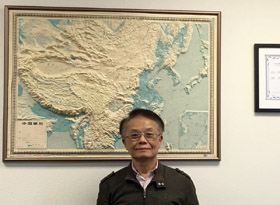 “Until November 2014, obtaining a single entry visa for every trip to the United States meant traveling toone of six embassies in the country and waiting in long lines. Since then, with the new 10-year, multi-entry visa implemented, repeat travelers can now avoid this process, making it easier than ever to travel to the states,” says Toddy Isham Arnold, the sales manager in charge of international travel for Napa’s Meritage Resort and Spa. “From 2014 to 2015, we saw a 126 percent increase in our guests from China. We’re excited to see that trend continue.”
“Until November 2014, obtaining a single entry visa for every trip to the United States meant traveling toone of six embassies in the country and waiting in long lines. Since then, with the new 10-year, multi-entry visa implemented, repeat travelers can now avoid this process, making it easier than ever to travel to the states,” says Toddy Isham Arnold, the sales manager in charge of international travel for Napa’s Meritage Resort and Spa. “From 2014 to 2015, we saw a 126 percent increase in our guests from China. We’re excited to see that trend continue.”
“There’s a growing interest for wine in China,” says Joe Chuang, who found initial success in biotechnology but has recently turned his attention to wine. He’s now a vintner and the founder of the Cal-China Wine Cultural Exchange, a nonprofit organization based in Napa that focuses on helping bridge the two cultures through wine.
“I have vineyards and a winery just outside of Beijing, and I also have a vineyard in Napa,” says Chuang.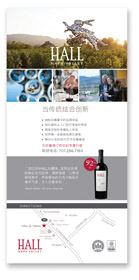 “All the wine from both of my wineries is sold in China. As the Chinese economy continues to grow, I expect the interest in wine [and Wine Country] to continue.”
“All the wine from both of my wineries is sold in China. As the Chinese economy continues to grow, I expect the interest in wine [and Wine Country] to continue.”
According to the World Bank website, “Since initiating market reforms in 1978, China shifted from a centrally planned to a market-based economy and has experienced rapid economic and social development. GDP growth averaged nearly 10 percent per year—the fastest sustained expansion by a major economy in history—and lifted more than 800 million people out of poverty. With a population of 1.3 billion, China recently became the second-largest economy, after the United States, and is increasingly playing an important and influential role in the global economy.”
The current Chinese economic five-year plan projects an annual growth rate of 6.5 percent and a doubling of the Chinese GDP by 2020. If the predictions come true, with the Chinese making up 20 percent of the world’s population, such a change within their economy is likely to have significant impacts on the United States (which makes up 4.5 percent of the world’s population).
Bridging the language barrier
Many local businesses have already taken steps to improve their offerings to Chinese guests, one of the biggest being Chinese-speaking (Mandarin) staff, with many wineries taking the lead. “We’ve found it exceptionally useful to have native Mandarin-speaking wine experts give tours, and that’s why we have many on our staff,” says Chuang. “Guests visiting Wine Country want to learn about wine, but many don’t speak English well, so this helps immensely. Having a Mandarin [not Cantonese] wine-tour guide is critical.”
“We’re excited that many of our guests come from Asia and more and more from China,” says Henriette Steinrueck, vice president of operations at Castello Di Amorosa. “We’ve hired Mandarin-speaking tour guides, created Mandarin menus and have special programs to help with shipping.”
“Along with tours in Mandarin, we’ll also be translating our brochures,” says Morét Webster, Hall Wine’s public relations coordinator. “All our tours will be available in Mandarin by reservation, and our website’s ‘Visit Us’ page will be translated, as well.”
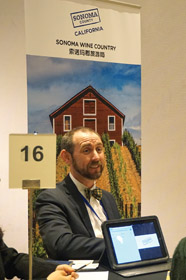 As efforts such as these move forward, many businesses are faced with the complex task of correct translation. “Each language has a specific cultural context, and Mandarin is a particularly complex language,” says John Mini, an accredited Chinese medicine specialist for more than 30 years who practices in Marin County. “I’ve written about the complexities of translating wine terminology. There’s really no exact translation for many of the terms we use to describe wine.”
As efforts such as these move forward, many businesses are faced with the complex task of correct translation. “Each language has a specific cultural context, and Mandarin is a particularly complex language,” says John Mini, an accredited Chinese medicine specialist for more than 30 years who practices in Marin County. “I’ve written about the complexities of translating wine terminology. There’s really no exact translation for many of the terms we use to describe wine.”
Eckert agrees. “Businesses that can handle Chinese visitors have the advantage,” he says. “For wine, Chinese may not know what a blueberry or strawberry tastes like, but they know lychee and Chinese dates, for example.”
The expected increase in Chinese tourism sparked a wave of cross-cultural efforts, often with wine being the common language.
“Education on both sides is important, so last year we organized a cross-cultural wine forum at Napa Valley College that highlighted some of the opportunities stemming from the expected increase of travelers from China,” says Chuang. “We’ll continue such educational events, some of which will be held in China. We also have a detailed understanding of distribution in China because of my winery and vineyard, which can provide useful information to wineries or other businesses looking to gain insight.”
Go to the source
Visit California is playing a major role in coordinating, supporting and creating a venue for organizations to learn more about Chinese tourism. “Visit California creates opportunities for our tourism industry partners to work with travel trade professionals in their home market,” says Beteta. “For example, Visit California recently took a delegation of California businesses to Shanghai and Beijing to meet with operators, agents and media over five days to educate them on what’s new in California. Representatives from California’s Wine Country attended the mission, too, assuring that the destination remains top of mind among key travel influencers in China.”
“Visit Napa Valley has assisted and co-hosted with Brand USA and Visit California and also participated in Visit California’s sales mission to China, visiting Beijing and Shanghai last April,” says Corbie Smith, senior manager of Travel Trade Development for Visit Napa Valley. “VNV has also worked with Visit California’s in-country team to have Napa Valley information included in its six ‘Club California’ training sessions in Shanghai, Chengdu, Beijing and Guangzhou.”
“This past year, we partnered with Visit California to bring [Chinese credit card company] Union Pay and BRIC consulting as part of its ‘China Ready’ program,” says Zahner. “Prior to that, we had training sessions with ChinaSF, which specializes in Chinese business customs and building trade between the Bay Area and China.”
 Organizations beyond those focused on tourism are actively engaging with Chinese visitors, too.
Organizations beyond those focused on tourism are actively engaging with Chinese visitors, too.
“We’re excited to be introducing the rare wines from the Premiere Napa wine brand to collectors in Hong Kong in November 2016,” says McGaughy. “Premiere Napa Valley Hong Kong lets us present Napa Valley to a market that’s growing its interest in high-quality New World wines.”
“As a partner with the California Wine Institute, we host visiting Chinese media as well as wine trade groups to Sonoma County,” says Jean Sessions, executive director of Sonoma County Vintners. “We also participate in annual trade shows in Hong Kong and other Chinese cities, to present unique and educational wine seminars and events. Our goal is to not only increase Sonoma County’s visibility and presence in China, but to also increase our trade, media and tourism relationships.”
UC Davis hosted a one-day China Wine Conference that examined the evolving wine import marketin China and ways to promote California wines. The meeting explored recent market changes, brand development, the appearance of informed consumers, the very different distribution systems, the emergence of local competition and the necessity for a digital brand presence in China. One of the panels of experts included Sonoma-based winemaker and entrepreneur Adam Ivor.
import marketin China and ways to promote California wines. The meeting explored recent market changes, brand development, the appearance of informed consumers, the very different distribution systems, the emergence of local competition and the necessity for a digital brand presence in China. One of the panels of experts included Sonoma-based winemaker and entrepreneur Adam Ivor.
Ivor and his partner, Jack Duan, recently launched Gliding Eagle, a company that facilitates the shipment of wine to China. “Shipping wine into China can be a challenge, and that’s why we created our company,” he says. “At the moment, many wineries still can’t ship directly to China. And even if they can, there’s often a concern about it being counterfeited. We not only ship but also authenticate the wine when it’s delivered. Our service provides businesses a method of addressing growing customer segments and specific needs, with the goal of providing an exceptional customer experience.”
Besides language, businesses should look to technology, food and cultural practices as a way to engage with Chinese travelers.
Social media and outreach
 China does not officially allow Facebook, Twitter or YouTube, but there are Chinese equivalents to these sites. Services like Tencent QQ, an instant messaging service that offers online social games, music, shopping and group and voice chat, has nearly 900 million subscribers in the country, and the Chinese micro-blogging website Sina Weibo, a hybrid of Twitter and Facebook, has more than 600 million subscribers. To put those numbers in perspective, the U.S. population is about 320 million people and Facebook has an estimated 1.2 billion worldwide subscribers.
China does not officially allow Facebook, Twitter or YouTube, but there are Chinese equivalents to these sites. Services like Tencent QQ, an instant messaging service that offers online social games, music, shopping and group and voice chat, has nearly 900 million subscribers in the country, and the Chinese micro-blogging website Sina Weibo, a hybrid of Twitter and Facebook, has more than 600 million subscribers. To put those numbers in perspective, the U.S. population is about 320 million people and Facebook has an estimated 1.2 billion worldwide subscribers.
“In China, social media is very popular,” says Arnold. “We’re making an effort to engage with customers using Chinese-specific platforms, like We Chat, which is similar to Facebook.”
“Social media is very important in China,” agrees KC Chen, who’s been working as the food and beverage supervisor at Solage in Calistoga for the last year. Chen comes from Shenzhen, which is just outside of Hong Kong. “I use We Chat to communicate with my friends and family back home. The recent opening of the Yao Ming tasting room in St. Helena is a good example—he’s one of our country’s superstars, and the news of his winery opening has spread fast. People are excited, and lots of people want to come to the U.S. to see it.”
Like Ming, other Chinese entrepreneurs are establishing local wine brands that appeal to Chinese tourists. In 2011, Hong Kong businessmen Anthony Fung purchased Napa Cleavage Creek Winery from founder Budge Brown and renamed it Calla Lily Estate & Winery two years later. Calla Lilly produces two wine tiers: Audax (a blend of Bordeaux varieties culled from the best of the estate’s vineyards) and Ultimate Red (a Napa Valley Cabernet Sauvignon and a Carneros Pinot Noir). All Calla Lily wines are sold in Hong Kong (Fung owns a wine shop there that focuses on Burgundian wines), though the partners are currently exploring exports to mainland China.
tourists. In 2011, Hong Kong businessmen Anthony Fung purchased Napa Cleavage Creek Winery from founder Budge Brown and renamed it Calla Lily Estate & Winery two years later. Calla Lilly produces two wine tiers: Audax (a blend of Bordeaux varieties culled from the best of the estate’s vineyards) and Ultimate Red (a Napa Valley Cabernet Sauvignon and a Carneros Pinot Noir). All Calla Lily wines are sold in Hong Kong (Fung owns a wine shop there that focuses on Burgundian wines), though the partners are currently exploring exports to mainland China.
Open by appointment only, the Calla Lily tasting room is actively doing outreach to attract Chinese tourism through Hong Kong-based magazines, a Chinese-based tourist website (visitors can make appointments through the website) and by entertaining key members of the trade. “We market ourselves as Chinese-owned winery,” says Fung. “[Chinese] tourists are interested in that angle.
“Drinking wine is now more popular in China,” he continues. “People want to learn about winemaking, the importance of the climate and location. And visiting a wine region is always attractive. Napa Valley, of course, is so beautiful. People also want an experience—a chance to relax and make memories. Especially younger people, who are getting wealthier, are looking for a new relaxing lifestyle to experience.”
Food and tea
 Talk to anyone who’s traveled in China and you’re sure to hear tales of the vast diversity of flavors and styles of food and tea. As with most cultures, there are different eating rituals and preferences from region to region, but a thread of similarity remains. You won’t find salt and pepper shakers on most tables, but rather a vast array of different soy-based sauces, vinegars and chili pastes. Forks and knives are rare, and serving your guest’s food from a central platter is a sign of friendship and respect.
Talk to anyone who’s traveled in China and you’re sure to hear tales of the vast diversity of flavors and styles of food and tea. As with most cultures, there are different eating rituals and preferences from region to region, but a thread of similarity remains. You won’t find salt and pepper shakers on most tables, but rather a vast array of different soy-based sauces, vinegars and chili pastes. Forks and knives are rare, and serving your guest’s food from a central platter is a sign of friendship and respect.
“Beyond language, other areas that should be explored include food options and a more detailed understanding of the cultural dietary differences,” says Chuang. “Many Chinese people can’t handle more than three Western meals in a row [with lots of cheese and butter], so we’re looking to help bring in four or five traditional Chinese restaurants in the coming years.”
The Chinese have a saying: “Firewood, rice, oil, salt, sauce, vinegar and tea are the seven necessities to begin a day.” Although tea is last on this list, its importance cannot be overstated.
“There are thousands of varietals of high-quality teas that have distinct tasting procedures, nomenclature and trade culture that are at least as old and rich as the tradition of wine in Europe,” Mini explains. “Anyone who’s serious about cultivating an authentic relationship with the Chinese market will want to become absolutely fluent with these terms and customs.”
Asking for green tea (lu cha) or black tea (hong cha) in China may be the equivalent of someone asking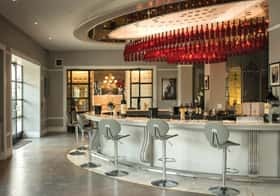 for red and white wine here, but for many Chinese red wines seems most preferred, possibly because the color red is seen as lucky. “We’ve found that many of these guests prefer our small-production red wines, which they’ve told us are often given as gifts back home as a sign of health and prosperity,” says Steinrueck.
for red and white wine here, but for many Chinese red wines seems most preferred, possibly because the color red is seen as lucky. “We’ve found that many of these guests prefer our small-production red wines, which they’ve told us are often given as gifts back home as a sign of health and prosperity,” says Steinrueck.
Within any two cultures there are differences, and these differences are worth noting for any business wanting to make a good impression. “We have cultural memos that outline best practices for our visiting guests, highlighting areas that might not be familiar to our staff,” says Arnold.
“The number four, for instance, to our guests from China can be thought of as our number 13 here, so we do our best not to place our Chinese guests in rooms starting with the number four. We also respect other cultural norms, too,” she continues. “Let’s say you have a group of corporate travelers [from China] and one is president of the company, then we make sure the president is put on the highest floor, unless they’re all on the same floor. We also notice that peak travel times are the summer, followed by the winter holidays, including Chinese New Year in January or February, and the October holidays.”
Exactly how much Chinese tourism will increase in the coming years is anyone’s guess, but for those businesses interested in what may become an increasingly important customer group, Eckert has some additional advice. “In addition to shopping, outdoor and natural landscapes, the Chinese visitor is very interested in food and wine,” he says. “As their knowledge of wines from California and around the world increases, they’re looking for unique experiences that go beyond having bragging rights. Wine-tasting tours, meeting the vintner, VIP winery release events, farm-to-fork food and wine pairing events are examples of some of the experiences they’re looking for when visiting the area.”
Beyond that, these travelers will need transportation, lodging and entertainment options to ensure they have a true California experience, so there’s opportunity for everyone in the hospitality industry to join the welcome and increase their impact.
From Sonoma to Shanghai
By William Rohrs
Did you know Shanghai has a California Center? The center’s goal is to smooth the creases caused by international trade: import tariffs, logistics, shipping and receiving and market price mark-ups, to name a few. Members of the California Center can set up displays in the office building, as well as distribute promotional materials to the public in Hong Kong and Shanghai to create interest before products hit the shelves. Overall, the collaboration between a goods provider in California and the team at the center makes for good business for both parties.
But how do the goods get to Shanghai?
This is the question Rohnert Park-based Food and Beverage World sought to answer. Arthur Walsh, CEO of Food and Beverage World, participated in a cultural exchange with China by visiting Shanghai and attending trade conferences to get an understanding of the Chinese market and its interests. He brought his insights back home, where he launched his collaboration with the California Center. Acting as a scout for the center, Walsh and his business launched the New World Wine Club, where members send their products through Food and Beverage World for sale at the California center. The center handles the logistics and the producer enjoys international profits. Everything from gourmet nuts to fine wines goes through the California Center.
Due to China’s growing counterfeit alcohol market, empty bottles and labels from Western providers are prizes sought by Chinese bootleggers looking to make a quick buck. Distributers are combating the trend by microchipping the bottles on additional labels, providing live GPS tracking from port to port. Walsh circumvents the worst of it by avoiding hotspots. “We know which lines are suspects for thefts, and we don’t use those channels,” he says. Wines from Food and Beverage World and the New World Wine Club aren’t chipped due to its route’s safety.
Domestic services for partners of Food and Beverage World include wine consultation services, agricultural goods exports and recipe eBooks. Whatever the need for the business, large or small, trying to make it into international markets, Food and Beverage World has the ways and means to get products onto Chinese shelves.
Author
-

Tim Carl lives, writes and teaches in Calistoga. He grew up in St. Helena and traces his Calistoga grape-growing roots back five generations. You can reach him at tcarl@northbaybiz.com.
View all posts


